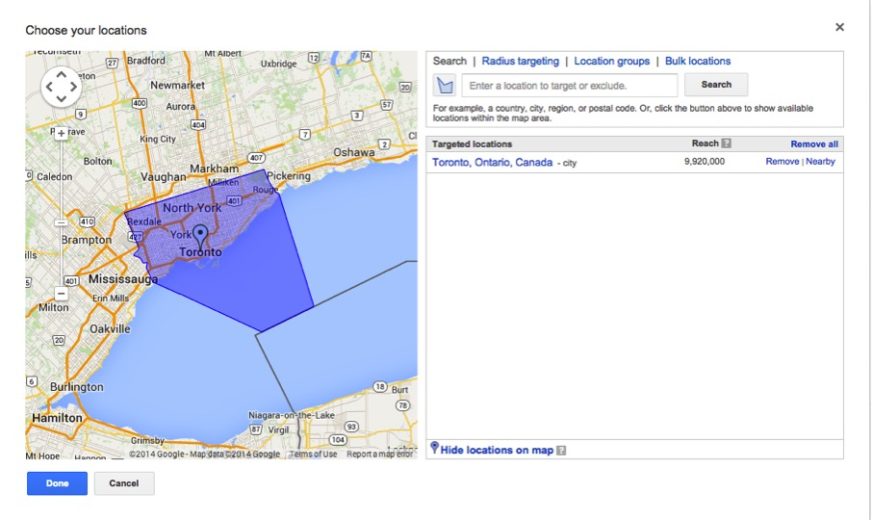How much does Google know about Toronto?
If you run a search then Google will tell you that Toronto has a population of almost 3 million people.
If you geo-target Toronto in Google AdWords – just the city centre, there are almost 10 million.
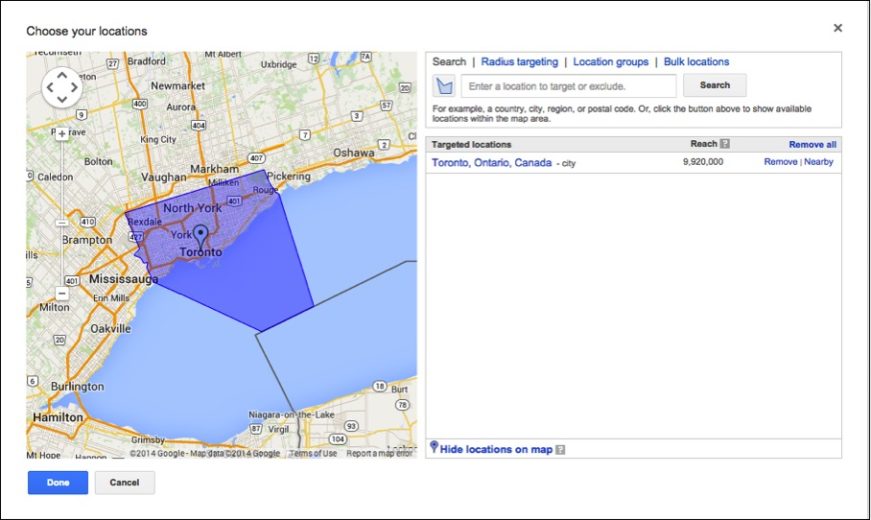
So which is it? Well, it’s almost 3 million.
So, in that case, who are the other 7 million? And where are they?
This is at the core of Google AdWords geo-targeting, and it has been throwing up some interesting problems that many advertisers are experiencing around the world. Let’s start at home. The two of us that wrote this piece live in very different parts of the world.
Steve Cameron is in Spain. He has two locations – his office and his home. They are about three miles apart. If he connects to the internet on his PC in the office, Google thinks he is in Motril – about 150km from the actual location. We can check this fact using the real time tracking feature in Google Analytics.
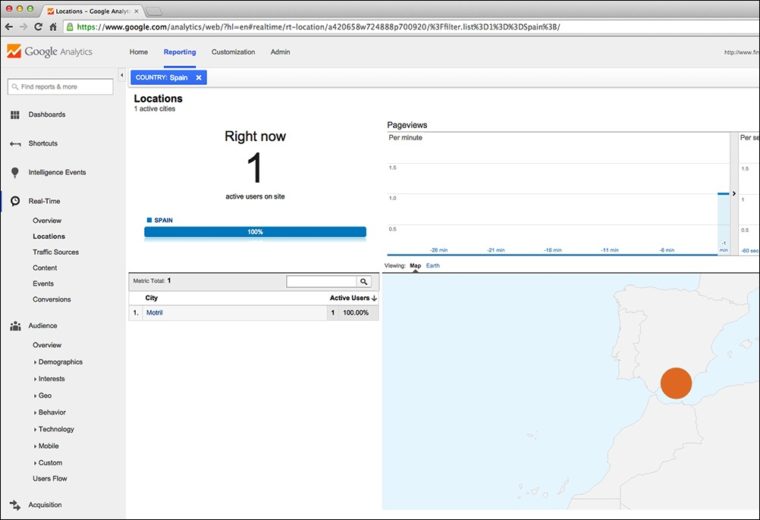
If he connects on his mobile using the office WiFi – then he is also located as being in Motril.
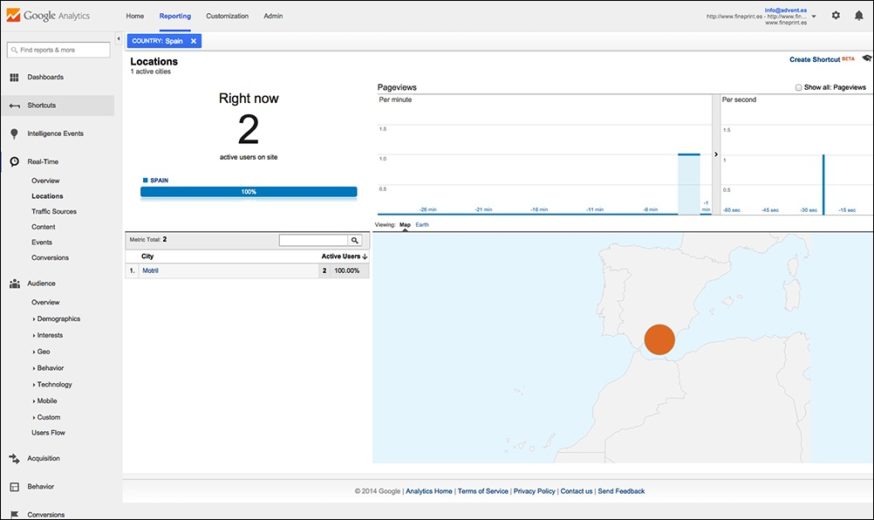
However, if he then disables the WiFi connection and refreshes his phone on the 3G connection – he is teleported to Madrid – 600km away.
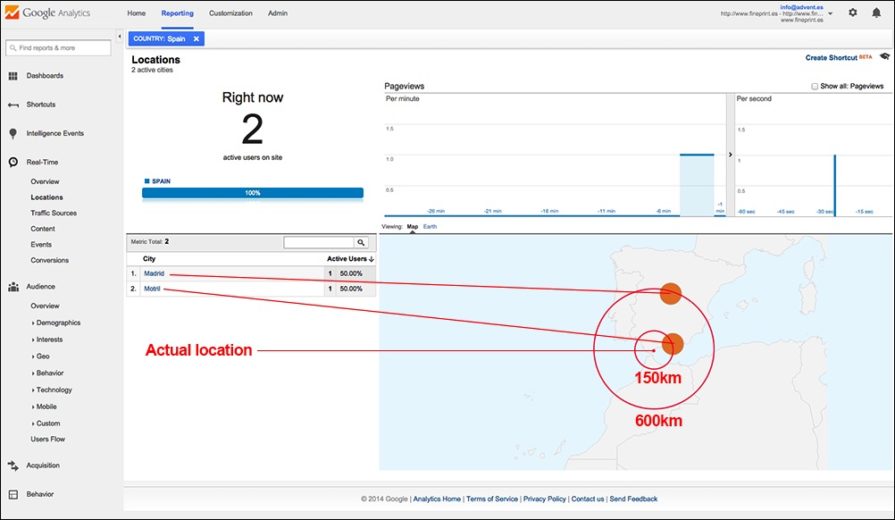
At home, the situation is different…
On the desktop running through the router he is located in San Pedro – actually that’s where the office is – but it’s close enough.

Again, connecting on the mobile through the WiFi – the visit is also logged as San Pedro.
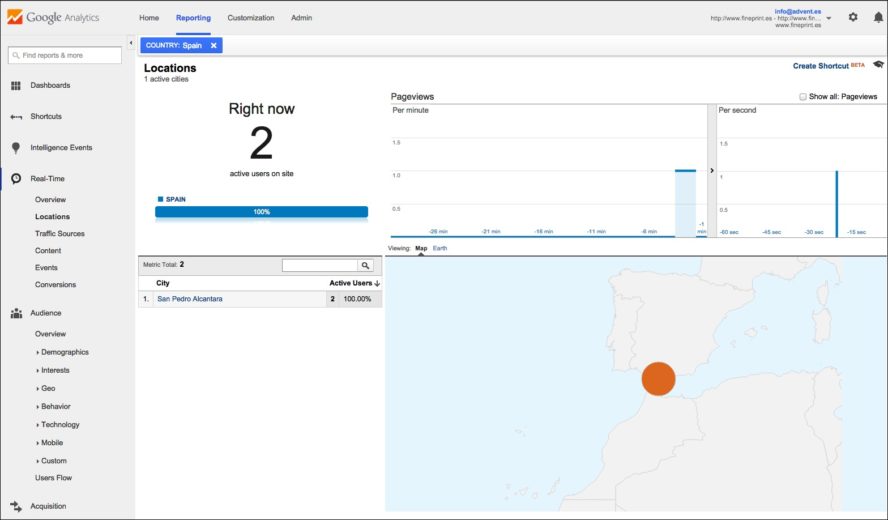
But this time, when the mobile WiFi connection is disabled the location is back to Madrid.
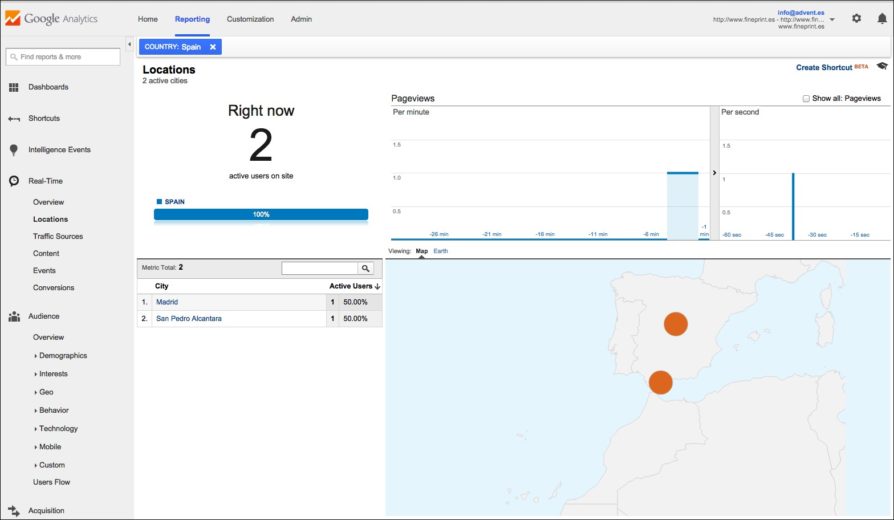
Julie Friedman Bacchini lives in Philadelphia in the US, and she recently moved. At her old address, which was a rural suburb, Google located her desktop within 15 miles, and on her mobile this was down to around 2 miles. Since the move into a less rural suburb, the desktop location is within 5 miles, the mobile still within 2.
The implications are far reaching – no pun intended.
If I wanted to target Steve Cameron with a tight local campaign – say 100km radius (actually for many campaigns, not that tight) I would catch him at home. But only on his desktop – or on his mobile if he was connected through the home WiFi.
I would not be able to reach him if he were in his office.
However, if I were targeting people in Motril, he would see my ads in his office. And if I were targeting Madrid he would see my ads whilst on his mobile, but out of WiFi range.
If he goes to a local bar and connects to their WiFi – well, he could be anywhere. who knows? Certainly not Google.
To target Julie Friedman Bacchini the options are better. The use of a 20 mile radius would have reached her in both her previous and her new homes, a 5 mile radius would reach her in her new home. Her pizza delivery guy might actually manage to deliver a warm pizza.
In many countries the broadband connections are located in large city hubs: Toronto, Madrid, Melbourne… so the apparent markets in these areas are significantly inflated. But the flip side is that in other parts of the country, there are significantly fewer people that can be targeted – and most of these can only be targeted through mobile devices where there are more available locators, such as mobile relay towers.
So how do we geo target our audience in the “burbs” whose connection is most likely in the city.
We use two principal tactics.
- A “regular” type of campaign with our core keywords using the geo-targeting as we would hope it worked. So if we have a dentist with a 15 mile radius catchment area, we set the geo targeting to the 15 miles.
- A “clone” of the regular campaign but with added locators. Where the first campaign might have the keyword “emergency dentist,” this campaign would have “+emergency +dentist +smalltown.” This campaign then has a much wider geo target, which would then encompass the major hub city.
The advanced setting here would better be “People in, searching for or viewing pages about my targeted location,” but this is also unreliable at best.
With the first approach we see a disproportionate number of mobile visits – as we would expect. Of course, if we have a client whose mobile site is poor (or non-existent) we may be excluding or certainly adjusting bids downwards for mobile users – in which case we can, in some cases, eliminate almost all our traffic.
With the second approach we open ourselves up to wastage, and we still miss out on those people who search without using the town locator.
We do, however, manage to pick up the refined searches. In many cases a search term will, for example, be quite general. In this illustration a search for emergency dentist in a Chrome incognito window on Google gave us only one paid search result – for Wow.com – and the organic search results were from all over the world – mostly the US.
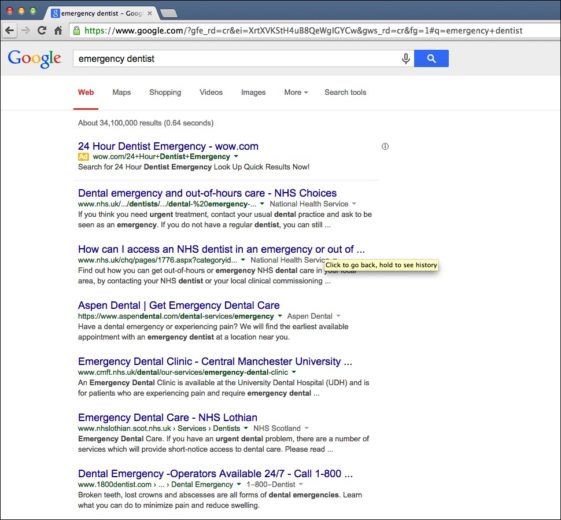
At this point a user will often refine their search query and the most likely refinement will be the addition of a geo locator. Provided our locators include the one used, our ads will now trigger.
So what about exclusions? The same argument is true – if we cannot be sure where a person is, we cannot reliably exclude them either. If we are looking to target someone in the suburbs and Google believes they are in the city, then excluding the city will exclude the target.
We might resort to building extensive lists of negative keywords. But, frankly, if we cannot readily target where we are, then the reverse is true – we cannot be sure where we are not… and now we are straying into the murky waters of existentialism!
And there is yet more….
If I start to see a trend in visitors from Melbourne, say – and these visitors convert well, I may, quite rationally, decide to set up a new campaign, with a substantial budget, to target more of these visitors by targeting Melbourne. But these visitors may all be hundreds of miles from Melbourne, and my budget is about to be wasted on a market that has no interest in my service whatsoever.
This is not a new phenomenon. Print advertisers target women by placing ads in Cosmopolitan, knowing that a good number of the readers are men. And they have learned to live with that. It is part of the accepted “wastage.”
The massive difference, however, is that with Cosmo, you are paying for a full-page ad, not for each individual reader. If advertisers had to pay a couple of dollars each time a man read Cosmo, there would be demonstrations on Madison Avenue.
One of the mistakes that many advertisers make is assuming that their traffic is coming from their targeted areas. And reinforcing this is the way in which Google Analytics will track visitors using the same information. If AdWords thinks you are in New York, then so does Analytics. As a result, the loop is closed and the illusion is maintained.
I target Madrid. My visitors are in Madrid but they didn’t convert. Must be me, right?
Well perhaps not. Your visitor in Madrid who didn’t convert might just be 600km away.
Editor’s Note: Julie Friedman Bacchini of Neptune Moon contributed to this post.



